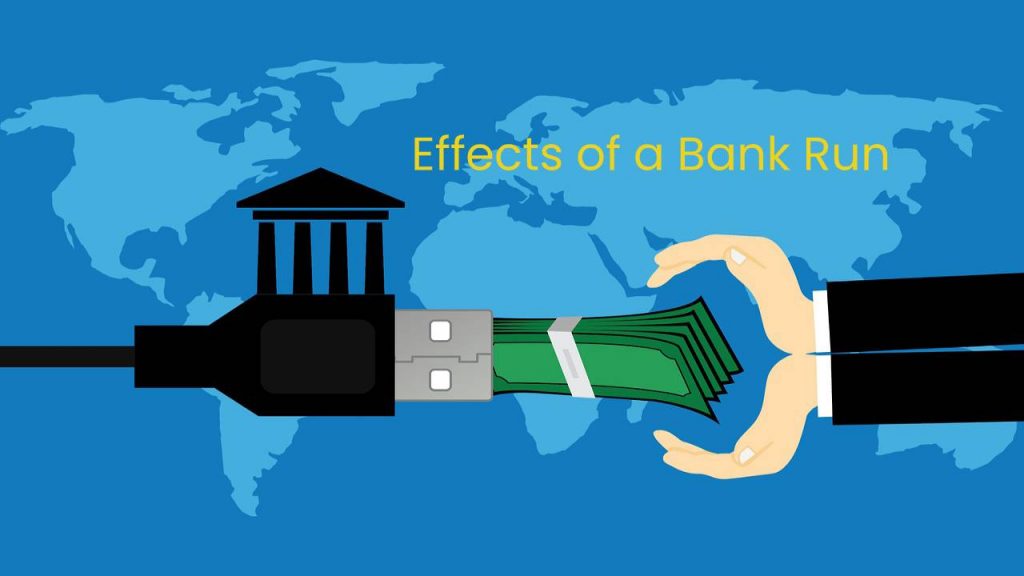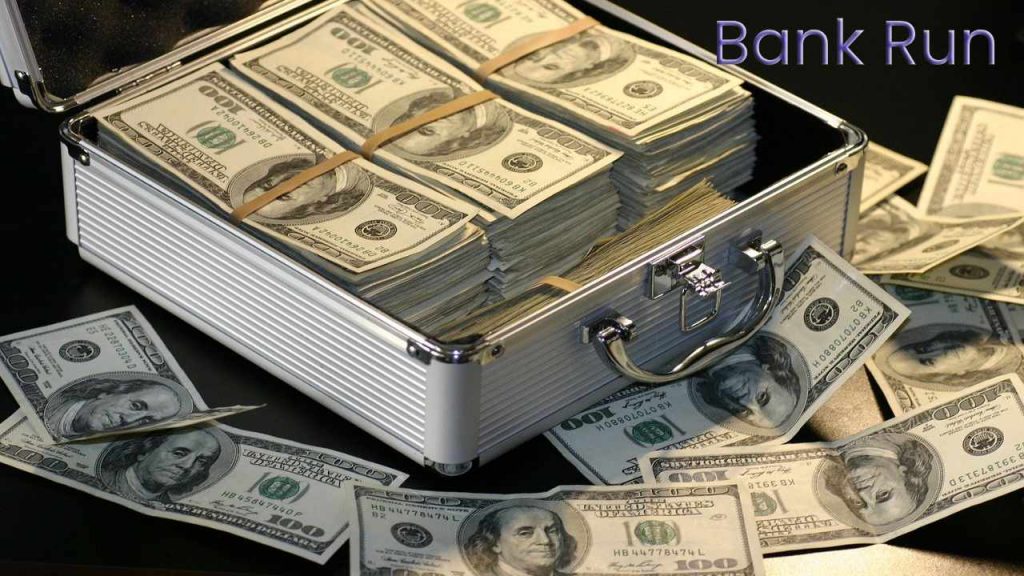Table of Contents
What is a bank run?
A bank run occurs when clients panic and worry that their bank is going bankrupt, the loss of funds they deposited. In a run on the bank situation, customers withdraw their savings, all within a very narrow time frame ( a few days). Although the bank may not have been insolvent at the beginning of a bank run, a run against the bank may precipitate bankruptcy.

In fact, like the bank run, it spreads with more and more clients and customers losing confidence. At some point, the bank reserve is not able to satisfy all withdrawal requests, and therefore, the bank becomes insolvent. During the Great Depression, a national bank career has been characterized by clients physically queuing at their bank to withdraw their money.
With the opportunity of online transactions, a bank run on the bank can start with clients/institutions transferring funds to other banks or financial institutions that they believe are less likely than the default. Such a term on the bench is called a silent run on the shore.
Specific government actions can mitigate a bank run (i.e., increased FDIC deposit insurance limits, new bank regulation, increased reserve requirements, monetary bailout). A career in the bank is also called a bank run.
Causes of a Bank Run
A bank run can have various causes, below are some of the most relevant:
- Serious economic crisis: In some cases, there may be fear that the State will intervene with banks by freezing their assets )
- Political crises: They lead to a loss of credibility of government bonds and the withdrawal of foreign investment
- Bad management of private banks: It can be for several reasons, such as excessive risk-taking, poorly diversified portfolios, etc.
- Speculative bubbles coming to an end: Overvaluation of assets becomes evident, and when they explode, there is a bank Run.
- Bankruptcy Issues: Many times, we often forget that banks too are private entities run by boards, directors and other entities. This means that they too are subject to bad management and policies. In all such cases, experts should always handle bankruptcy legal questions.
Effects of a Bank Runs
A first effect of the bank run is the destabilization of the affected banks. In the modern banking system, banks do not keep all deposits received in cash (money or coins), but only a part of them along with cash forecasting. With the remaining part, operations are carried out that allows them to make a profit (they make loans, make investments, etc.).
In this way, if all the clients come at the same time to request their money, the bank will not be able to respond to all of them, thus reinforcing the fear that when the client arrives, there will be no resources left.
A second effect of the bank run is longer term and is the general distrust in the banking system and its subsequent destruction.
This has very adverse effects on the economy, growth and investment stagnate, unemployment increases, and the country is plunged into an economic crisis that can spread to the political and social sphere.
Measures to prevent a bank run
Governments can take some steps to prevent bank run from arising or prospering.
These measures include:
- Temporary suspension of bank withdrawals: This is to prevent people from acting rashly and all running at the same time to take out their deposits. The temporary suspension is often called a playpen.
- Banking regulation: That prevents banks from being mismanaged and putting the credibility of the system at risk.
- Lender of last resort: The Central Bank can act as lender of last resort to guarantee clients that their money will be return
- Creation of guarantee funds: These are funds that can use if clients demand the return of their resources, and their bank has declared bankruptcy.
The following are some of the best-known examples of a bank run:
- October 24, 1929 – USA: Victim of massive sales of shares, the New York Stock Exchange collapses. Faced with significant losses but also the insolvency of thousands of bankrupt savers, US banks are weakened. Savers turn to agencies to withdraw their savings. The New York Federal Reserve intervenes and prevents the implosion of the banking system. But the crisis continues, and between 1929 and 1933, about 40% of North American banks cease their activity. Since the deposits were not insured, some clients lose everything.
- August 1998 – RUSSIA: The fall of the ruble and the collapse of high-yield Treasury bonds (GKO), suddenly rejected by foreign investors, expose the risky management of Russian banks. Many clients withdraw their money. Dozens of banks disappear, and they sink the savings of individuals.
- November 30, 2001 – ARGENTINA: In an economic recession for three years, the country has chained austerity plans and loses control of its external debt. Fearful of a freeze on bank assets by the state, thousands of customers go to banks to withdraw their money, more than $ 1 billion in total on November 30 alone. From the following day, to avoid a collapse of the economy, the government imposes a ceiling of 250 dollars or pesos (both were tied equally by the Convertibility law) per week and per account for liquidity withdrawals. Violent protests erupt on December 19, and the government declares a state of siege.
- January 5, 2006 – TAIWAN: The industrial conglomerate Rebar announces the suspension of payments of two of its subsidiaries, and causes the concern of the clients of another subsidiary, Chinese Bank, who are making massive withdrawals of some 15,000 million Taiwanese dollars ( ? 300 million). The government decides to assume control of the bank that same night, refloats it, and puts an end to the mistrust of savers. The president and founder of the conglomerate are on the run in the United States.


